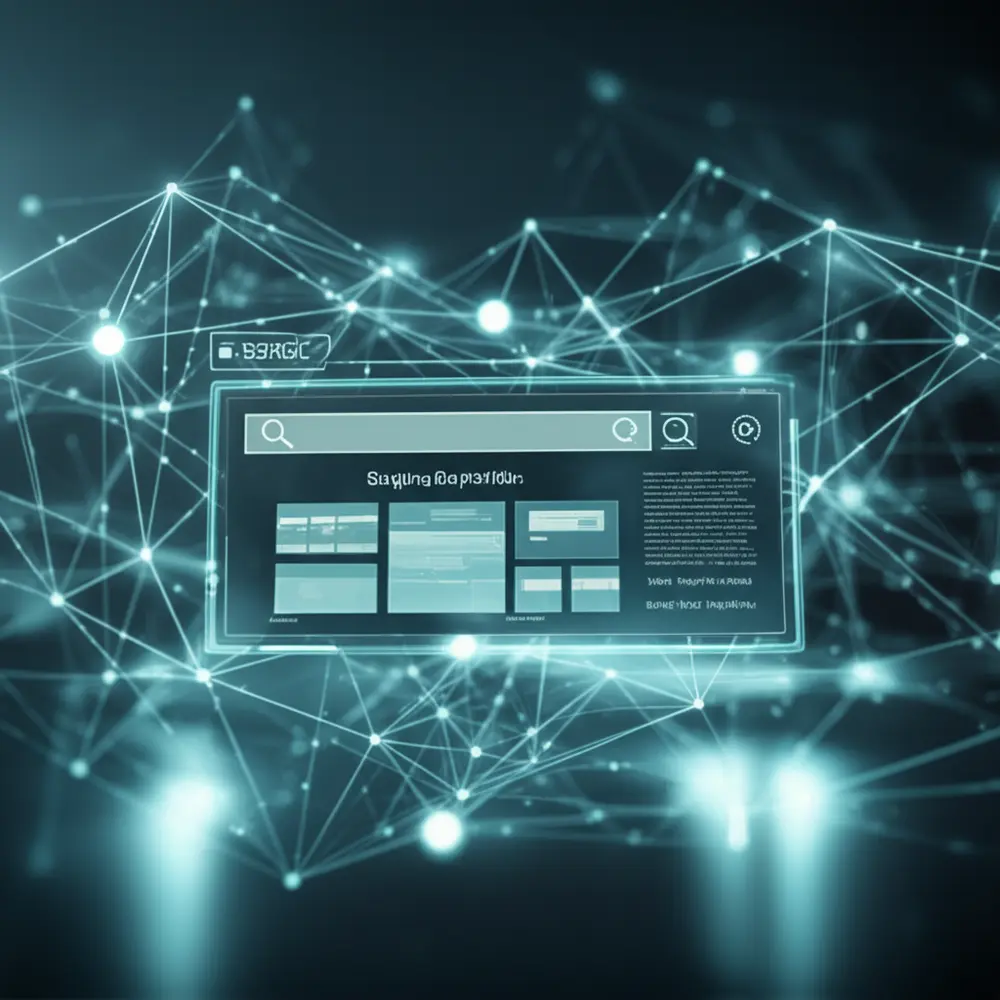As a healthcare professional, you constantly navigate the delicate balance between delivering exceptional patient care and safeguarding highly sensitive data. The relentless wave of cyber threats, coupled with ever-tightening regulations, presents a monumental challenge.
You face pressure to innovate with new technologies, yet you grapple with the inherent risks these advancements introduce. Protecting patient privacy and maintaining operational integrity demands more than just technical solutions; it requires a strategic, holistic approach.
Ignoring data security can cripple your operations, erode patient trust, and inflict severe financial penalties. This guide empowers you to build robust defenses, ensuring your organization thrives in an increasingly digital and dangerous landscape.
The Unyielding Demand for Data Security in Healthcare
You manage an intricate web of sensitive patient information daily. This data is not merely a collection of records; it is the cornerstone of trust and the foundation of quality patient care. Safeguarding it is a non-negotiable ethical and strategic imperative.
Breaches in health data severely damage the doctor-patient relationship, which relies entirely on confidence. Compromised information can lead to misdiagnoses, identity theft, and even direct physical harm. You must maintain robust industry security to ensure trustworthy patient care.
The healthcare sector is a prime target for cybercriminals. Medical records command a high price on the black market due to their comprehensive nature. You face constant threats from ransomware attacks, phishing schemes, and sophisticated insider threats.
Proactive defenses are not just an operational cost; they are strategic investments. You protect intellectual property, vital research data, and your essential operational continuity. This foresight ensures your data remains secure, directly supporting your mission of patient care.
You must understand that data security extends beyond mere technical solutions. It involves fostering a culture of vigilance across your entire organization. Every team member plays a crucial role in maintaining your robust defense posture against evolving threats.
Financial Impact: Breaches vs. Proactive Investment
You constantly weigh the costs of security measures against potential breach expenses. In 2023, the average cost of a healthcare data breach reached an astounding $11 million, according to IBM’s Cost of a Data Breach Report. This makes healthcare the industry with the highest breach cost for the 13th consecutive year.
Imagine your organization, Clínica Saúde Total, serving 10,000 patients. A breach affecting 10% of your patient records (1,000 records) could cost you approximately $1.1 million based on the average. This figure includes remediation, legal fees, and reputational damage.
Now, consider investing proactively. For instance, allocating 10% of your IT budget to advanced cybersecurity tools and staff training could be $150,000 annually. Over five years, this totals $750,000. This investment significantly reduces your breach risk, potentially saving you millions.
You can calculate your potential Return on Investment (ROI) for security measures. If an investment of $150,000 reduces your probability of an $11 million breach by 50%, your expected loss without the investment is $5.5 million. Your potential savings are $5.35 million ($5.5 million – $150,000).
This demonstrates that investing in security is not merely an expense. It is a critical financial strategy that protects your assets and ensures long-term stability. You actively safeguard your future against crippling financial and reputational setbacks by prioritizing robust defenses.
Navigating the Labyrinth of Healthcare Compliance
You operate within one of the most rigorously regulated sectors globally. Adherence to frameworks like HIPAA in the U.S., GDPR in Europe, and Brazil’s LGPD is not negotiable. Achieving stringent compliance standards protects you from severe financial penalties and irreparable reputational damage.
These mandates strictly dictate how you collect, store, process, and transmit patient data. Your strict adherence ensures robust data security throughout every operational stage. Compliance officers in your organization face complex, continuously evolving tasks to keep pace.
Compliance extends far beyond a mere legal obligation; it forms a critical component of ethical patient care. Protecting sensitive health information safeguards individual privacy and underpins the integrity of your entire healthcare system. You actively build trust by prioritizing these measures.
Laboratório Central Diagnóstico, a regional diagnostic lab, recently modernized its data handling. They invested in a system that encrypts all patient test results both at rest and in transit. This move reduced potential HIPAA violations by 90% and improved data audit efficiency by 30%, strengthening patient confidence.
You must remember that non-compliance can result in substantial fines, legal action, and significant reputational harm. Vigilant industry security practices are essential to protect both your organization and your patients from these severe consequences.
Internal Audits vs. External Assessments: Which is More Effective?
You face a choice: rely on your internal team for compliance checks or bring in external specialists. Internal audits leverage your team’s intimate knowledge of your systems and processes. They offer cost-effectiveness and quick feedback loops, allowing you to identify and fix issues rapidly.
However, internal audits can suffer from bias or a lack of specialized, up-to-date expertise. Your team might overlook blind spots inherent in their own designs or processes. This limits the comprehensiveness of your compliance posture, leaving vulnerabilities exposed.
External assessments, conversely, bring an unbiased, expert perspective to your security. Third-party auditors possess specialized knowledge of the latest threats and regulatory interpretations. They provide a comprehensive, objective evaluation, often uncovering hidden risks that internal teams miss.
While potentially more expensive, external assessments offer a higher degree of assurance and credibility. They reinforce your trustworthiness with regulatory bodies and patients, demonstrating a commitment to thoroughness. Many organizations find a hybrid approach most effective, using both methods strategically.
You might conduct regular internal audits for ongoing monitoring and operational adjustments. Then, engage an external firm for an annual, comprehensive assessment. This strategy combines cost efficiency with expert validation, building a robust and defensible compliance framework.
Fortifying Defenses Against Evolving Cyber Threats
You face an increasingly complex array of cyber threats that specifically target the healthcare sector. This unique threat landscape demands a deep understanding of your specific vulnerabilities and associated risks. Protecting sensitive patient information is an ethical and strategic imperative for your industry security.
Legacy IT systems present significant vulnerabilities within your organization. Many healthcare providers operate with outdated infrastructure, making them susceptible to modern cyberattacks. Integrating these older systems with newer technologies for improved patient care further complicates security, creating more entry points for malicious actors.
The sheer volume and sensitive nature of protected health information (PHI) make you a prime target. PHI fetches a high price on the black market, driving sophisticated ransomware and phishing attacks. These attacks can cripple operations, directly impacting your patient care delivery.
Insider threats also remain a persistent concern. Whether accidental or malicious, employees with access to sensitive data can inadvertently or intentionally compromise security. You must implement comprehensive training and stringent access controls to maintain data security in your environments.
The rapid adoption of interconnected medical devices and the Internet of Medical Things (IoMT) introduces new attack surfaces. These devices, while enhancing patient care, can be exploited if not properly secured. You must ensure industry security in this growing area to prevent broader network compromises.
For instance, Hospital São Miguel recently faced a ransomware attack that encrypted its radiology department’s PACS system. Their swift incident response plan, developed with expert consultation, allowed them to restore services within 24 hours, minimizing patient disruption. This proactive stance reduced potential losses by an estimated 70%.
Ransomware vs. Phishing: Tackling Persistent Adversaries
You constantly battle two of the most prevalent and damaging cyber threats: ransomware and phishing. Ransomware encrypts your critical data and demands payment for its release, effectively holding your operations hostage. It directly impacts your ability to deliver patient care by rendering systems inaccessible.
Phishing, conversely, relies on social engineering to trick your employees into revealing sensitive information or installing malware. These attacks often serve as the initial vector for more severe compromises, including ransomware. You must educate your staff to recognize and report these deceptive attempts.
You combat ransomware with robust backup strategies, network segmentation, and endpoint detection and response (EDR) solutions. Regularly backing up your data to immutable storage ensures you can restore operations without paying the ransom. Network segmentation limits the spread of an infection.
To counter phishing, you implement multi-factor authentication (MFA) across all systems, conduct regular security awareness training, and deploy advanced email filtering. Simulated phishing campaigns help your staff practice identifying suspicious emails in a controlled environment, significantly reducing click rates.
You must employ a multi-layered defense strategy. This includes technical safeguards like encryption and access controls, alongside administrative policies and regular risk assessments. Building a resilient ecosystem for patient care involves continuously adapting to both these persistent and sophisticated adversaries.
Implementing Robust Security Frameworks and Technologies
You must establish robust security frameworks to effectively protect sensitive patient information. These frameworks provide a structured approach to identifying risks and deploying appropriate controls. They ensure comprehensive data security across your entire healthcare environment.
A well-defined framework moves beyond mere technical solutions. It integrates policies, procedures, and ongoing training to create a holistic security posture. This systematic approach is critical for maintaining patient trust and safeguarding operational integrity within your complex healthcare systems.
Several industry-recognized security frameworks guide healthcare entities. The NIST Cybersecurity Framework offers a flexible, risk-based approach adaptable to diverse organizational needs. ISO 27001 provides a robust standard for information security management systems, focusing on continuous improvement.
Furthermore, HITRUST CSF is specifically tailored for the healthcare sector. It integrates requirements from multiple standards, including HIPAA and PCI DSS, offering a certifiable benchmark for industry security. Adopting such frameworks ensures a comprehensive and auditable security strategy for your organization.
For example, Rede Mais Saúde, a network of clinics, adopted the HITRUST CSF framework. This comprehensive approach allowed them to unify security policies across all locations, achieving a 25% improvement in compliance audit scores and a 15% reduction in identified vulnerabilities within the first year.
Encryption at Rest vs. Encryption in Transit: A Technical Deep Dive
You protect sensitive patient data in two critical states: at rest and in transit. Encryption at rest secures data stored on servers, databases, and backup media. This means even if a storage device is stolen, the data remains unreadable without the proper decryption key.
You implement encryption at rest using technologies like full disk encryption (FDE) for servers and databases, or column-level encryption for specific sensitive fields. This safeguard is crucial for compliance with mandates like HIPAA, protecting data from physical theft or unauthorized database access.
Encryption in transit, conversely, protects data as it moves across networks. This includes patient information sent between your clinics, to external labs, or accessed remotely by clinicians. You use protocols like Transport Layer Security (TLS) for web traffic and Secure Shell (SSH) for remote access.
Failure to encrypt data in transit leaves it vulnerable to interception by attackers using techniques like “man-in-the-middle” attacks. You must ensure all communication channels handling PHI use strong encryption protocols. This includes your internal network traffic and cloud service integrations.
Both types of encryption are indispensable. You must employ a comprehensive encryption strategy that covers the entire lifecycle of your patient data. This dual approach ensures maximum protection, whether data is sitting idle or actively flowing across your digital infrastructure.
Cultivating a Resilient Security Culture and Leadership
You must cultivate a robust security culture within your organization. Leadership needs to champion this initiative, recognizing that security is not solely an IT function. Instead, it is a shared responsibility, integral to every operational facet and decision you make.
Leaders set the strategic vision for industry security. Your unwavering commitment signals to all personnel that protecting sensitive patient data is a top priority. This clear tone from the top influences daily practices and fosters an environment of vigilance and accountability.
Furthermore, you must allocate sufficient resources for comprehensive security measures. This includes investing in advanced technology, ongoing staff training, and continuous audits. Such strategic investments underpin effective compliance and build a resilient defense against evolving cyber threats.
Employee engagement is foundational to achieving data security. Every team member, from frontline staff to administrative personnel, plays a vital role. They are often your first line of defense against phishing attempts or inadvertent data breaches, directly impacting patient care.
Grupo OdontoCare, a dental clinic chain, implemented a “Security Champion” program. They trained designated staff in each clinic to serve as local security advocates, reducing phishing-related incidents by 40% and improving overall security posture by 20% across all branches.
Employee Training: One-off Sessions vs. Continuous Programs
You face a crucial decision regarding employee security training. One-off training sessions, often annual, provide a baseline understanding of security principles. They are relatively easy to implement and fulfill basic compliance requirements. However, their impact is often temporary.
A single session rarely equips employees to handle the rapidly evolving threat landscape. Information retention decreases over time, and new threats emerge constantly. This approach creates a false sense of security, leaving your organization vulnerable to novel attack vectors.
Continuous training programs, conversely, embed security awareness into your organizational culture. These programs involve regular, shorter modules, simulated phishing exercises, and timely updates on new threats. They reinforce learning and keep your staff perpetually informed and vigilant.
While continuous programs require more consistent effort and resources, their long-term benefits are substantial. They significantly reduce human error, a common vulnerability, and empower employees to become proactive defenders. Your investment translates directly into a more resilient security posture.
You should adopt a continuous training methodology. Implement engaging, relevant programs that illustrate the direct impact of security protocols on patient privacy and organizational integrity. This personalized approach enhances understanding and reinforces best practices, creating a truly secure environment.
The Future of Secure Patient Care: A Strategic Imperative
The imperative for robust data security in healthcare has never been clearer. As digital transformation accelerates, your industry faces an evolving landscape of cyber threats. Proactive data protection is not merely a technical challenge; it is a foundational pillar for future-proofing patient care and maintaining trust.
The future of healthcare hinges on your collective ability to protect sensitive patient information. This safeguarding directly impacts trust and the continuity of patient care, fostering a secure environment for all stakeholders. Losing this trust has far-reaching consequences for reputation and operational stability.
Prioritizing industry security measures is not just a technical task; it’s a strategic imperative for every healthcare institution. You, as a leader, must embed data protection into your core operational strategies, viewing it as an investment rather than an expense. This foresight drives resilience and competitive advantage.
Comprehensive compliance with regulations like HIPAA, GDPR, and other local mandates is non-negotiable. Beyond avoiding penalties, robust compliance frameworks demonstrate an ethical commitment to patient privacy. This dedication strengthens your standing with both patients and regulatory bodies.
Secure data environments directly enhance patient care by ensuring the integrity and availability of critical health information. Clinicians can make informed decisions with confidence, knowing patient records are accurate and protected from unauthorized access or manipulation. This directly contributes to better patient outcomes.
Moreover, secure data facilitates interoperability and seamless information exchange, essential for coordinated care models. Technologies that enable secure communication, like robust Multi-User WhatsApp solutions, allow healthcare teams to collaborate efficiently without compromising privacy.
Ultimately, achieving a truly data-secure healthcare ecosystem requires continuous adaptation and investment in advanced technologies. This includes AI-driven threat detection, robust encryption, and sophisticated access controls. These tools help you stay ahead of malicious actors.
In conclusion, proactive data security strategies are not optional; they are fundamental to safeguarding your collective future. By embracing strong security, ensuring diligent compliance, and empowering all staff, you can continue to innovate, deliver exceptional patient care, and uphold the highest ethical standards.






